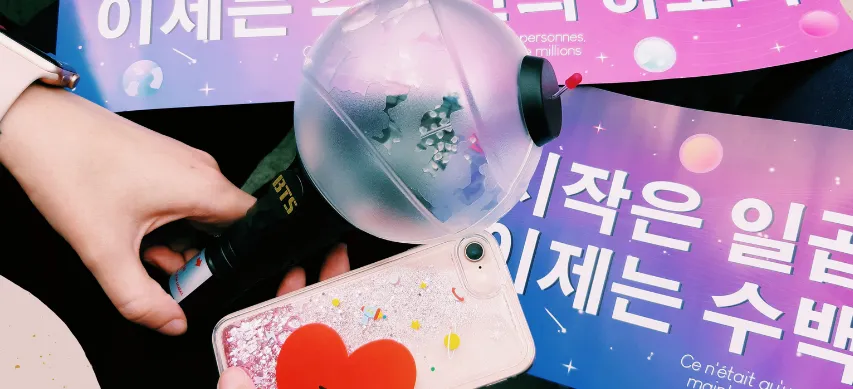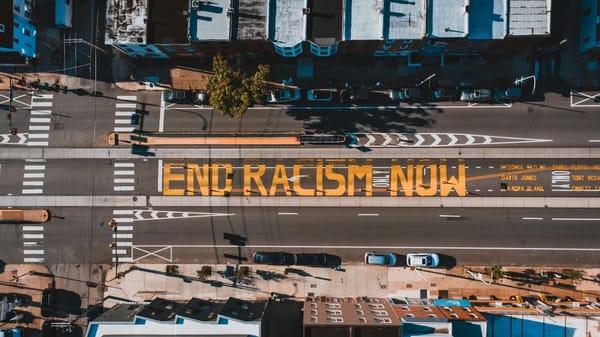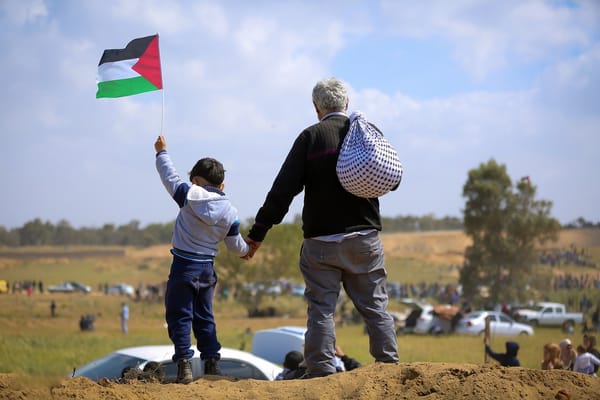What the World Can Learn from ‘K-Pop Activists’
Online activism is nothing new, but K-Pop superfans have demonstrated the power of mass mobilisation on social media over and over again - and we can only stan.

Access the Audio Read version of this article directly on Spotify for Podcasters.
"For so long, fandom has been stigmatised, especially ‘fangirling’, and it appeared that ‘teenage’ fans were only taken seriously once mainstream media found out that K-Pop stans derailed Trump’s rally."
When you hear the word ‘K-Pop’, you may think of talented singers with bright hair and unrivaled dance moves. At some point during the past year, you may have taken a dive into the K-Pop side of ‘stan Twitter’ (where millions of accounts of K-Pop superfans reside), and seen countless fancams of BLACKPINK’s Jisoo or BTS’s Jimin, littered under top trending hashtags. On that day, without realising it, you may have been witnessing an online activism campaign - disguised under vibrant outfits and hypnotic choreographies.
Last summer, when the Dallas Police Department called for the public to send video evidence of illegal activity during the Black Lives Matter protests, they certainly did not anticipate getting spammed with fancams by K-Pop stans. Hours later, the police announced that the app was temporarily offline. For so long, the ‘obsessive teenage fangirls’ trope has been used to stereotype all K-Pop stans, who come from various demographics, genders, ethnicities, and cultural backgrounds. That stereotype is often rooted in sexism, especially when bashing the K-Pop movement. In reality, for anyone truly paying attention, those same fans are social media hyper-aware and know how to grab the general public’s (or from one fandom to another) attention for social causes.
A simple ‘It would be a shame if the Dallas Police Department app crashed because we posted too many fancams’ type of tweet gets thousands of retweets in minutes, mobilising a whole community determined to use their social media presence for good. So when the DPD ‘snitch app’ was rendered useless by the community’s incessant spamming of their favourite idols instead of pictures of BLM protestors, K-pop stans were – finally – praised for their efforts by worldwide media. In a similar fashion, stans are also experts in getting petitions to their goals in hours, and flooding far-right hashtags with unrelated K-Pop content, making it impossible for right-wing users to find the information they’re looking for.
According to YeonJeong Kim, Twitter’s Head of Global K-Pop Partnerships, K-Pop Twitter achieved a record of 6.7 billion tweets in 2020, with BTS, EXO, BLACKPINK, and NCT being the most-mentioned artists. Among the top twenty markets for the genre are Indonesia, Thailand, South Korea, the Philippines and the USA. In other words, K-Pop Twitter is huge, and many of these billions of tweets were able to support and encourage others to support anti-racist causes during the pandemic.
Despite not exactly being life changing revolutionaries, stans were able to utilise their collective social media power to encourage people to donate towards anti-racist charities and organisations. Last June, Donald Trump’s rally in Tulsa, Oklahoma was notoriously hijacked by K-Pop stans, who booked most of the tickets with no intention to go, after rallying massively on social media. Trump claimed that “almost one million people” had reserved tickets. Instead, only 6,200 people were in attendance, at a rally that had a capacity of 19,000. His second rally was cancelled after being trolled by K-Pop stans yet again.
But not everything is rosey or perfectly organised, like in all communities – which are not monoliths. Despite the short moment of K-Pop stan activism, the wider discussions tend to leave out Black and ethnic minority stans who experience racism, and some stans may have simply used the ‘moment’ to promote their favourite idol groups or their bias. And though some journalists and mainstream media may have viewed this activism style as something new, researchers such as Casey Fiesler quickly reminded social media users that fandom activism didn’t just occur during that short period in June 2020, but has been around for a while – even all the way back to the Star Trek years.
For so long, fandom has been stigmatised, especially ‘fangirling’, and it appeared that ‘teenage’ fans were only taken seriously once mainstream media found out that K-Pop stans derailed Trump’s rally. The truth is that many of these stans are also in their thirties, forties and fifties – therefore very much aware of the ways (and inequalities) of the world. The lack of nuance isn’t exactly surprising, as fans are generally depicted to be white teenage girls just like in the Beatles era footage, which may be true in some regions, but isn’t a reflection of how diverse K-Pop fandoms can be. And therefore, of how varied their lived experiences are.
For instance, BTS and their ARMY of fans – who matched the band’s donation of one million dollars for Black Lives Matter in a day through mass mobilisation on social networks – have been influential to the extent that PhD researchers (Research BTS) track data, insights, the general fandom culture and overall, BTS’s impact. One in an Army is a collective of fans that raises money for charitable causes too. It’s not all just fangirling over Korean idols. It’s just unfortunate that most of the K-Pop reporting conveniently ignores Black K-Pop stans or South East Asian stans, and barely showcases the activist side of fandom culture. But they are worth stanning.





